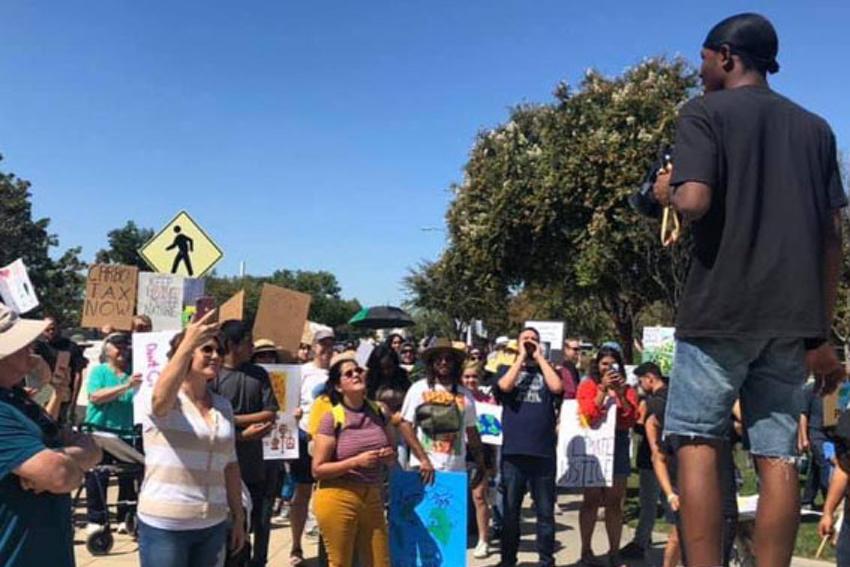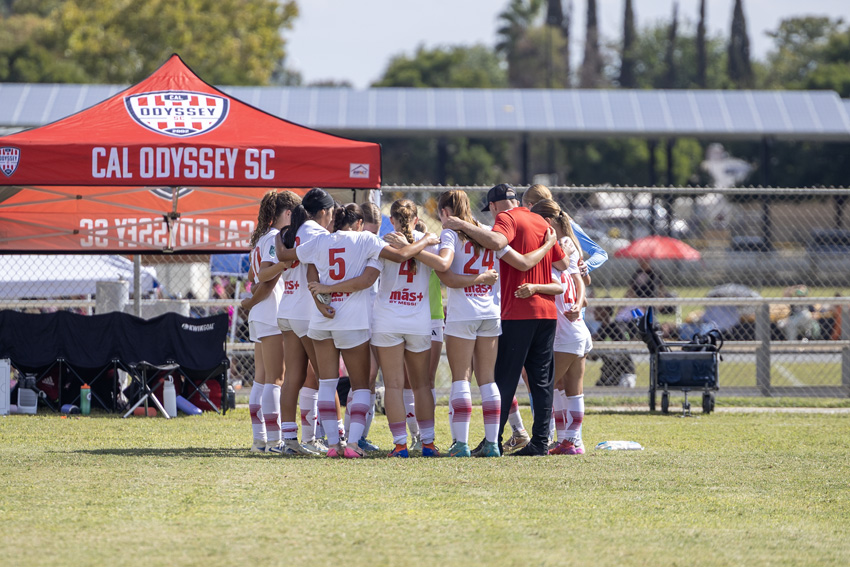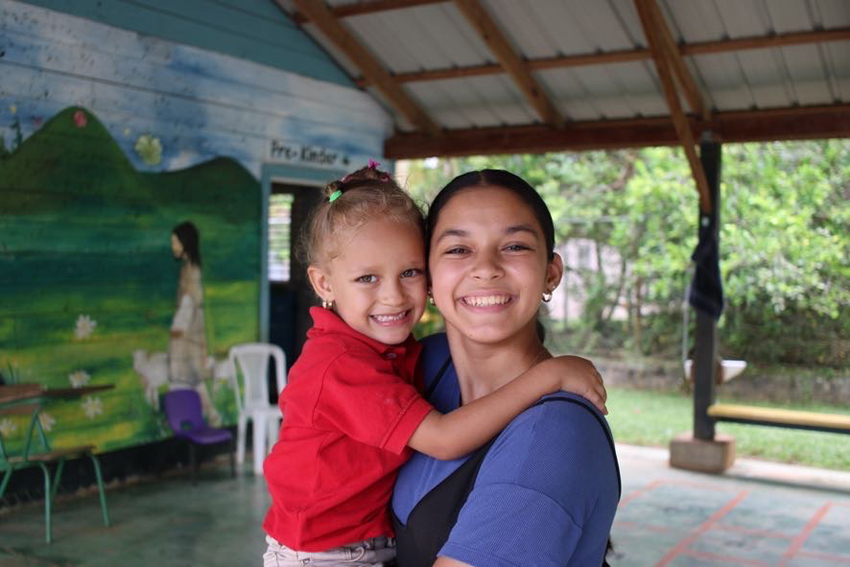After accepting an invitation to speak at the United Nations, Swedish teen environmental activist Greta Thunberg delivered an emotional speech, Sept. 23, 2019, accusing world leaders of stealing her dreams and her childhood with their inaction on climate change.
By the end of her speech, she warned the listeners, “The world is waking up. And change is coming, whether you like it or not.“
Although Thunberg is furthering the conversation on climate change through her speech, others in the audience and in national media outlets disagreed with her, and rebuked and questioned her appearance and agenda.
Climate change is increasingly effecting the earth in various ways, resulting in changing weather patterns on either extreme. Often misconceived, the unpredictable weather patterns include not only NASA’s estimated 2-degree global temperature increase, but also more extreme and unpredictable weather patterns such as intense blizzards, hurricanes, and snowfall.
Frequently discussed on a national level, the San Joaquin Valley still experiences the impacts of climate change.
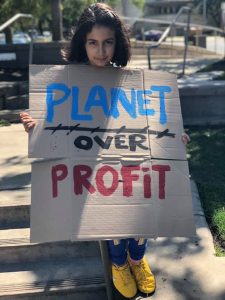
Enclosed by the Sierra Nevada and Coastal Ranges, the mountainous borders create a small bowl-like shaped valley rich in soil. Fresno, a city in the San Joaquin Valley, is located in the middle of this “narrow bowl”. In recent years, the Valley’s summers have become longer and hotter. According to Valley Air District, extreme weather is “conducive to the formation and retention of air pollution due to climate change.”
According to a study by UC Davis, some air pollution in the Valley actually comes from Asia and travels across the Pacific Ocean via wind currents. It sinks into the Valley, blocked by the Sierra Nevada and Coastal mountain ranges.
Greta Thunberg started the movement “Friday for Future” when she was a 15-year-old. Instead of going to school, she conducted strikes in front of the Swedish Parliament every Friday. One year later, the movement spread worldwide with 30 participating countries already joining in the strike.
The Fresno downtown climate strikes were organized by Fresno’s Kieshaun White, a youth environmental activist, who experiences the disparity between in air pollution in Northern and Southern Fresno. After hearing Greta Thunberg’s United Nations speech, he dedicated himself to local climate strikes with his mentor, Marcel Woodruff.
“I was inspired by the story of Greta and the narrative that she was fighting for,” White said. “Then I started to look at what is going on in my local town, Fresno.”
In the following podcast, Kieshaun White talks about the climate movement in Fresno with Serena Zhao.
The first climate strike in downtown Fresno drew around 225 people, Sept. 20, and White expects to see the number grow over the month. White and his teammates hope to create a parade in 2020 with two to three thousand people, targeting youth in particular. At their debriefing meeting, they analyzed strategies they can do better to help build the next march in the near future.
The San Joaquin Valley Air District, a public health agency, is committed to improving the quality of life of all Valley residents through effective air quality management.
According to the San Joaquin Valley Air pollution control district, air pollution emission is generally divided into two categories: stationary and mobile. Stationary sources include industrial facilities and operations, consumer products and agricultural burning, while mobile sources include vehicles and light.
The Valley Air District provides a program entitled Healthy Air Living“(HAL), which gives opportunities and educational resources to make personal changes that will result in the improvement of the Valley’s air quality. Anthony Presto, Air Quality Education Representative for HAL, shares some figures of the climate situation in the Valley.
“While both mobile and stationary sources must be addressed when it comes to overall air pollution in the San Joaquin Valley,” Presto said, “mobile sources are the largest source, representing roughly 80 percent of the Valley’s air pollution inventory.”
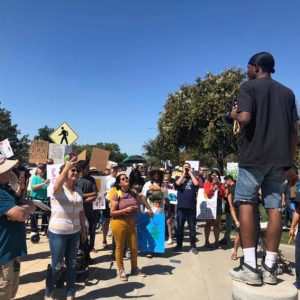
In the past 30 years, Valley Air provided more than $2 billion in grants and incentives in areas they don’t have regulatory authority. According to Presto, HAL reduced air pollution through “helping residents purchase electric vehicles, repair vehicles that cannot pass an emissions test, fund van pools, incentivize carpools and replace gas mowers with electric models.”
Air pollution can threaten the health of all living creatures. Some health effects of smog and other types of air pollution include headaches, allergies, chest pain and tightness.
According to the Asthma and Allergy Foundation of America (AAFA), air pollution can also worsen asthma symptoms.
Not only does air pollution affect asthma symptoms, but it also contributes to other lung diseases and health problems. One local Fresno resident talked about how their family is afflicted by the polluted air.
A child named Logan (last name withheld) carries a progressive genetic disease that causes thick, sticky mucus to build up in the systems of his body. Logan’s mother, Jenny (last name withheld), talked about the harms that air quality brought to Logan’s disease.
“Whatever Logan breathes in sticks to his lungs,” Jenny said. “He does many medical treatments like inhaled medicines and a vest machine he wears for hours a day to help shake the mucus and get it out.””
Logan frequently visits San Francisco for doctor appointments. Because of the danger that the disease can bring to Logan, the family has to be strict about air quality.
“With the air quality being poor,” Jenny said, “especially over the past five months, he can only handle a short five or ten minutes outside.”
Logan’s mother regularly checks Valley Air for air quality information on their home page. They equipped air purifiers all over their house and try to keep the air as clean as possible.
“When the air is extremely bad we give Logan extra activities indoor and try to travel to the clean coastal air when we can.” Jenny said.
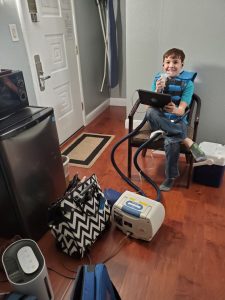
After numerous attempts to contact the Singh Sinus Breathing Center and Baz Allergy, Asthma & Sinus Center, members of the staff did not make themselves available for an interview about asthma problems in the Central Valley.
Besides available breathing centers located throughout the Valley, Fresno residents are determined to battle the air quality.
The HAL is determined to reduce emissions that pollute the air. The organizers encourage public transportation and ride sharing in the Valley.
From 1980 to 2018, the NOx emissions in the central Valley declined 91 percent. NOx emissions are a result of nitrogen and oxygen combusting in the air under conditions such as high temperatures and with automobile exhaust.
The Fresno Council of Governments specifically offers Fresno commuters information on various public transit agencies, ride sharing and other programs in Fresno County.
The Fresno Council of Governments provided the Active Transportation Plan to encourage human-powered transportation such as biking, walking, cycling and skateboarding.
While public transportation or ride sharing might not be realistic opportunities for students, high schoolers can do their part by joining organizations such as Tree Fresno and taking their own water bottles to school, or even participating in a protest movement like “Friday for Future”.
For more information about the tools available in educating air quality to protect public health, Valley residents can visit www.myRAAN.com, or download the Valley Air app on their mobile devices.
Additionally, contact Kieshaun White Cleaner Air Experiment via Facebook for information on the local Fresno climate strike activities.
For more articles, read World Kindness Day: Improve community goodwill, health, personal value or Kabab City opens fourth location, offers unique menu items
Serena Zhao can be reached via email.

